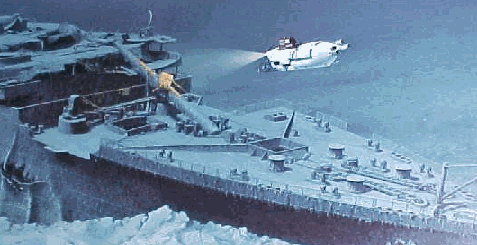|
Alvin is our most favorite, and expensive toy! Alvin is a submersible, which is a research vessel, capable of functioning at great depths. Submersibles have a crew compartment within a pressure hull, life-support and power systems, sensors (cameras, sonar hydrophones, and other equipment), and usually external mechanical arms that are used to collect samples and perform other tasks. Alvin is most known for his work exploring the wreck of the Titanic in 1980. However, he was first known for a dive that took place 20 years before. In 1960, he successfully retrieved a H-Bomb, which had accidentally been dropped by a B-52 over the coast of Spain. Alvin is capable of diving up to 13,000 ft. (3,960 m) with a crew of three. Experiencing a dive in Alvin is a gift more valuable to an oceanographer than you can imagine. Experiencing the expedition to the floor is as close as we can get to draining off the water! I remember my first dive… I almost got cabin sickness!
Alvin is able to navigate the seafloor by using transponders that sit on the bottom of the ocean. Each transponder is tethered 185 meters above by an anchor weight. It is up this high so that the signals it sends and receives from Alvin are not obstructed by any hills. Alvin is drawn to the bottom with minimal electricity. The descent relies on weights that are abandoned once on the bottom and ready to return to the surface. The abandoned weights can be found along sea-floor ridges and spreading zones. They are affectionately referred to as Alvin Poop!
|
|



